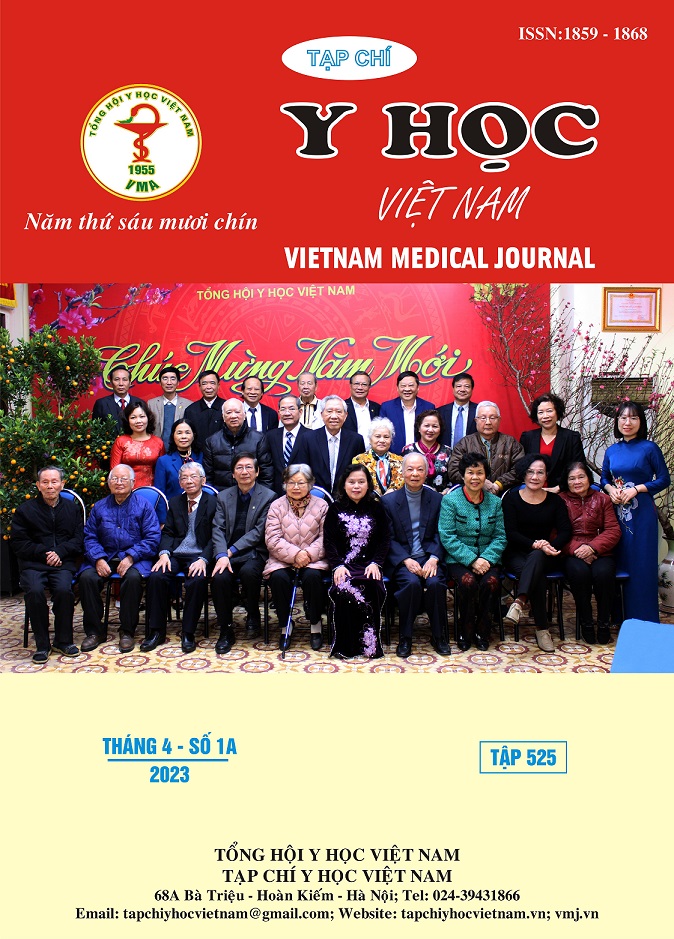THE EFFECTIVENESS OF THE MANAGING CARDIOVASCULAR DRUG- DISEASE INTERACTIONS IN INPATIENTS THROUGH THE DRUG INTERACTIONWARNING SYSTEM AND CLINICAL PHARMACY ACTIVITY IN SAINT PAUL GENERAL HOSPITAL
Main Article Content
Abstract
Objectives: To evaluate the effectiveness of managing cardiovascular drug-disease interactions in inpatients through the drug interaction warning system and clinical pharmacy activity in Saint Paul General Hospital. Results: This research was designed as an intervention study. The results showed that the patients in this study were elderly (mean age: 67.2 ± 14.4 in the pre-intervention period and 53.0 ± 8.6 in the intervention period), using many drugs in both stages, respectively: 7.6 ± 2.0 and 6.2 ± 1.3. After the pharmacist intervened, the number of cardiovascular drug-disease interactions reduced from 71 (1.055%) to 7 (0.101%). Interaction pairs that still occurred after interfering were: clopidogrel - peptic ulcer with bleeding, thiazide diuretics - severe renal failure, and aspirin - peptic ulcer without bleeding. The consensus between physicians and pharmacists handled these interactions. Conclusion: The drug-disease interaction warning system and clinical pharmacy activity have managed all pairs of interactions that often occur on inpatients in Saint Paul General Hospital.
Article Details
Keywords
drug - disease interaction, warning system, clinical pharmacy activity, hospital
References
2. J.T. Hanlon et al (2017). Potential drug-drug and drug-disease interactions in well-functioning community-dwelling older adults. Journal of Clinical Pharmacy and Therapeutics.Vol42(2), 228-233.
3. Heleen. V.D. Sijs (2006). Overriding of Drug Safety Alerts in Computerized Physician Order Entry. Journal of the American Medical Informatics Association. Vol13(2), pp.
4. Schedlbauer A., Prasad V., et al. (2009). What evidence supports the use of computerized alerts and prompts to improve clinicians' prescribing behavior?. J Am Med Inform Assoc.Vol16(4), pp. 531-8.
5. Doubova Dubova S. V., Reyes-Morales H., et al. (2007). Potential drug-drug and drug-disease interactions in prescriptions for ambulatory patients over 50 years of age in family medicine clinics in Mexico City. BMC Health Serv Res. Vol 7, pp. 147.
6. Pugh M. J., Starner C. I., et al. (2011). Exposure to potentially harmful drug-disease interactions in older community-dwelling veterans based on the Healthcare Effectiveness Data and Information Set quality measure: who is at risk?. J Am Geriatr Soc. Vol 59(9), pp. 1673-8.
7. Schmidt-Mende K., Andersen M., et al. (2020). Drug-disease interactions in Swedish senior primary care patients were dominated by non-steroid anti-inflammatory drugs and hypertension - a population-based registry study. Scand J Prim Health Care. Vol 38(3), pp. 330-339.
8. Zhan C., Correa-de-Araujo R., et al. (2005). Suboptimal prescribing in elderly outpatients: potentially harmful drug-drug and drug-disease combinations. J Am Geriatr Soc. Vol 53(2), pp. 262-7.
9. Weddle S. C., Rowe A. S., et al. (2017). Assessment of Clinical Pharmacy Interventions to Reduce Outpatient Use of High-Risk Medications in the Elderly. J Manag Care Spec Pharm. Vol 23(5), pp. 520-524.
10. Kamada T., Satoh K., et al. (2021). Evidence-based clinical practice guidelines for peptic ulcer disease 2020. J Gastroenterol. Vol 56(4), pp. 303-322.


